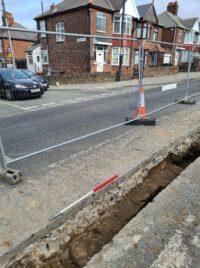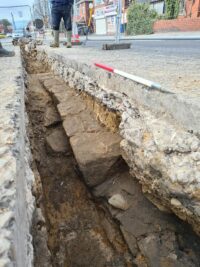A new ten-foot section of Hadrian’s Wall has been discovered in Newcastle, northeastern England. The section was found during routing water main replacement works under West Road, just outside Newcastle’s city center.
What is now Newcastle was founded as a Roman fort and small associated settlement on the north bank of the River Tyne in the 2nd century A.D. It was to be the eastern terminus of Hadrian’s defensive wall and the fort was built to defend the important bridge crossing the River Tyne. The bridge was dubbed the Pons Aelius (Aelian Bridge) after the family name of the emperor who had visited the area in 122 A.D. and conceived of a continuous wall crossing the breadth of northern England.
Construction of the wall began at the Pons Aelius and moved westward. It had reached the fort at what is now Chesters 30 miles west when the decision was made to build an eastward extension to Wallsend, three miles away. Newcastle was no longer the easternmost point of the wall, but it does boast the oldest remaining wall sections from the first phase of its construction.
The newly-discovered section is from the earliest phases of construction, as attested by its large blocks of stone. Smaller stones were used in later construction and repairs.
Philippa Hunter from Archaeological Research Services Ltd said: “Despite the route of Hadrian’s Wall being fairly well documented in this area of the city, it is always exciting when we encounter the wall’s remains and have the opportunity to learn more about this internationally significant site.
“This is particularly true in this instance where we believe that we uncovered part of the wall’s earliest phase.
The wall will remain in situ and Northumbrian Water will work around it. The water main route will be redesigned and angled so that it avoids the wall entirely and leaves a cushion of space around the excavation trench.

